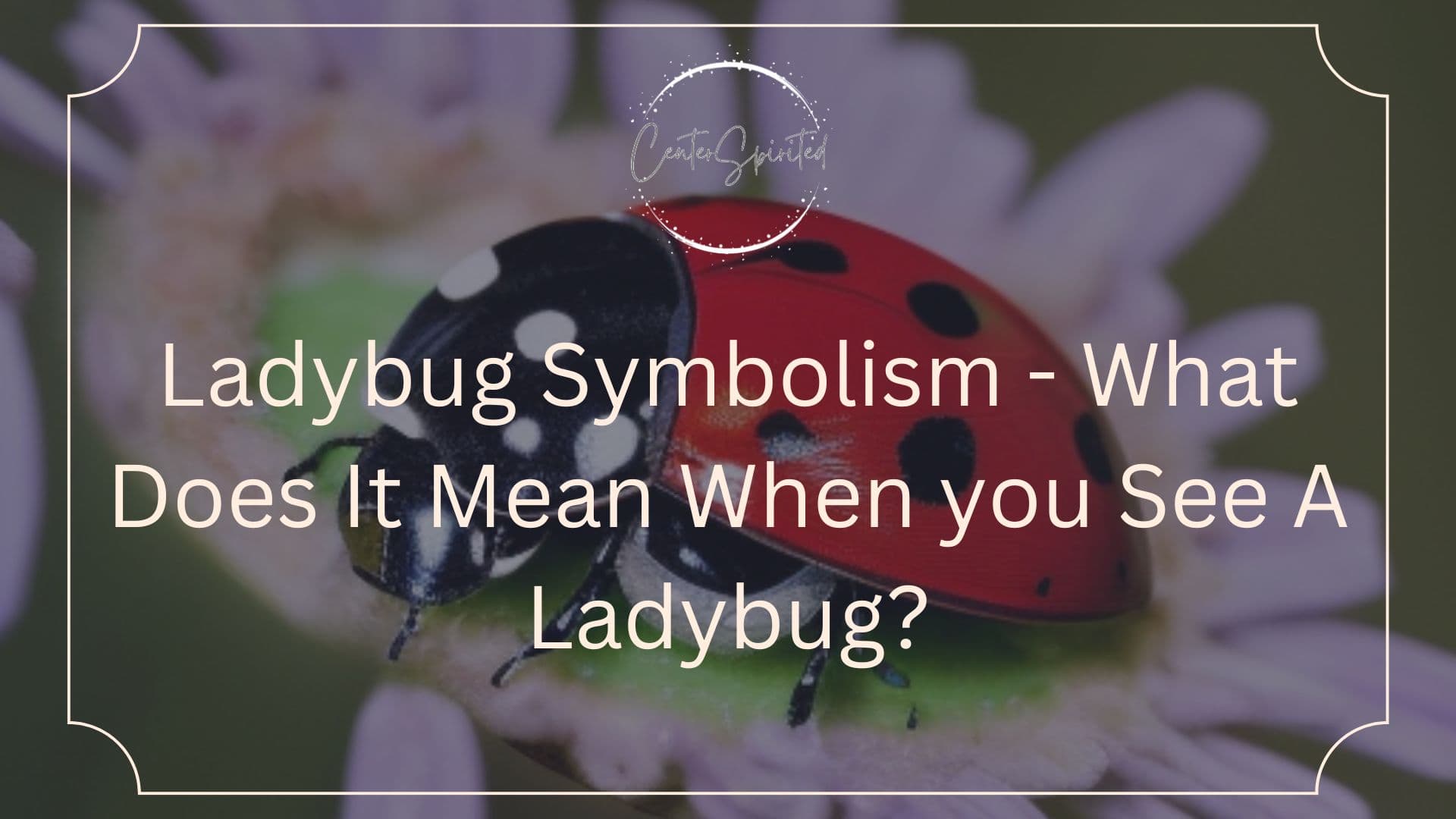Unveiling the Mystical World of Ladybug Symbolism: A Journey of Discovery and Wonder
In the realm of symbolism, few insects have captivated the imagination of people as much as the ladybug. With its striking red and black coloration, delicate wings, and endearing demeanor, it's no wonder why this tiny creature has become an enduring icon of good fortune, prosperity, and even love. From ancient mythologies to modern-day folklore, the ladybug has woven its way into the fabric of human culture, revealing a rich tapestry of secrets, meanings, and interpretations that await our discovery.
In many cultures, the ladybug is revered as a symbol of good luck, prosperity, and fertility. Its aphid-eating habits have led to associations with agriculture, nature, and the cyclical rhythms of life. In some traditions, the ladybug is believed to possess magical powers, capable of warding off evil spirits, bringing good fortune, and even curing ailments. As we delve deeper into the world of ladybug symbolism, we'll uncover the fascinating stories, legends, and interpretations that have shaped our collective understanding of this enigmatic insect.
Ancient Origins and Cultural Significance
Ladybug Symbolism in Ancient Mythologies
The ladybug has been a part of human culture for thousands of years, with ancient civilizations recognizing its symbolic significance. In ancient Greece, the ladybug was associated with the goddess Aphrodite, patron deity of love, beauty, and fertility. The Greek myth of Aphrodite and Adonis features a ladybug as a symbol of the goddess's power to protect and nurture love. Similarly, in ancient Rome, the ladybug was linked to the goddess Pomona, patron of fruit trees and fertility.
Eastern Influences and Buddhist Traditions
In contrast, Eastern cultures have a unique and intriguing relationship with the ladybug. In Japan, the ladybug is known as the "Manpuku," a symbol of good fortune, prosperity, and longevity. In Buddhist traditions, the ladybug is associated with the concept of " ren," or spiritual renunciation, representing the ability to let go of attachments and desires. In China, the ladybug is considered a symbol of the earth element, representing stability, balance, and harmony.
Folklore and Legends
European Folklore: The Ladybug's Magical Powers
In European folklore, the ladybug is often associated with magical powers, capable of warding off evil spirits, bringing good fortune, and even curing ailments. In Germanic traditions, the ladybug is believed to possess the power to heal illnesses, particularly those related to the heart and lungs. In some stories, the ladybug is said to be a loyal companion to fairies and other supernatural creatures.
American Folklore: The Ladybug's Role in Agriculture
In American folklore, the ladybug is often linked to agriculture, representing the cyclical rhythms of nature and the importance of nurturing the earth. In some stories, the ladybug is said to possess the power to bring fertility to crops, ensuring bountiful harvests and prosperous farming communities.
Modern Symbolism and Interpretations
Ladybug Symbolism in Modern Times
In modern times, the ladybug has taken on new meanings and interpretations. As a symbol of good luck, prosperity, and fertility, the ladybug has become a popular motif in branding, marketing, and design. The ladybug's aphid-eating habits have also led to associations with sustainability, eco-friendliness, and environmentalism.
Ladybug Symbolism in Psychology and Spirituality
Ladybug Symbolism in Psychology
In psychology, the ladybug is often used as a symbol of emotional balance, representing the ability to navigate life's challenges with ease and poise. The ladybug's gentle nature and loving demeanor have led to associations with compassion, empathy, and kindness.
Ladybug Symbolism in Spirituality
Ladybug Symbolism in Spiritual Traditions
In spiritual traditions, the ladybug is often associated with the concept of "non-duality," representing the interconnectedness of all things. The ladybug's simple, yet elegant design has led to associations with simplicity, humility, and a deeper understanding of the natural world.
Underlying Themes and Symbolic Meanings
Common Themes in Ladybug Symbolism
A closer examination of ladybug symbolism reveals a range of common themes and underlying meanings. These include:
• Good luck and prosperity
• Fertility and abundance
• Nature and the cycles of life
• Love and relationships
• Magic and wonder
• Spiritual growth and transformation
• Symbolic Meanings of Ladybug Colors
The colors of the ladybug hold significant symbolic meaning. The red color is often associated with:
• Energy and vitality
• Passion and love
• Courage and strength
• The black color is often associated with:
• Wisdom and insight
• Protection and guidance
• Mystery and the unknown
Conclusion
The ladybug's symbolism is a rich and complex tapestry, woven from threads of ancient mythology, folklore, and cultural significance. As we continue to explore the mystical world of ladybug symbolism, we'll uncover new meanings, interpretations, and insights that will deepen our understanding of this enigmatic insect. Whether you view the ladybug as a symbol of good luck, prosperity, or love, its significance extends far beyond its physical appearance, speaking to our deepest desires, hopes, and fears.
Sabrina Carpenter Height Ft
Alma Powell Cause Ofeath
Karlan Connieenio
Article Recommendations
- Rami Malek And Portiaoubleday
- Shri
- Lara Diabla
- Ranran Fujii Insta
- Joan Van Ark
- Ihriuomotill Married
- Arielle Kebbel Husband
- Isaac Kappy
- Joneda
- Vivian Jenna Wilson Net Worth



